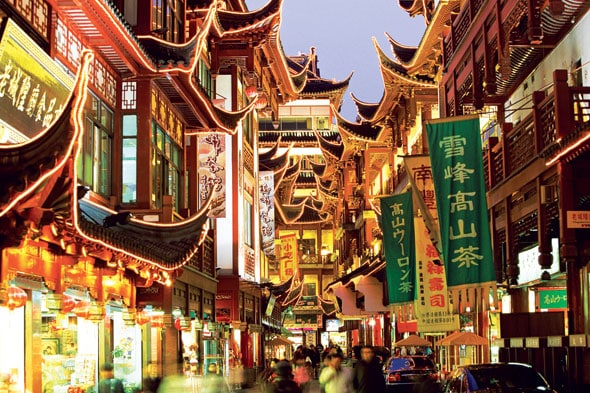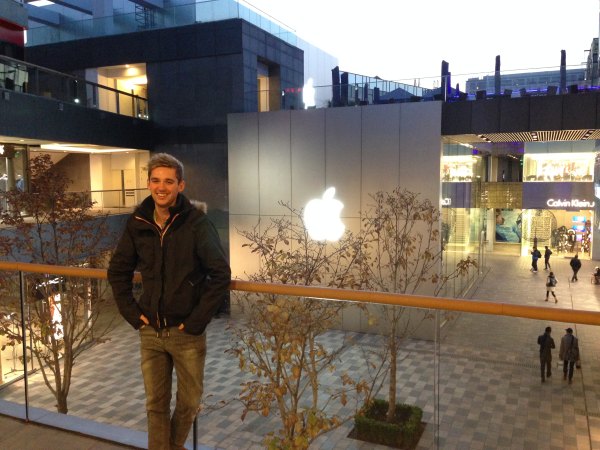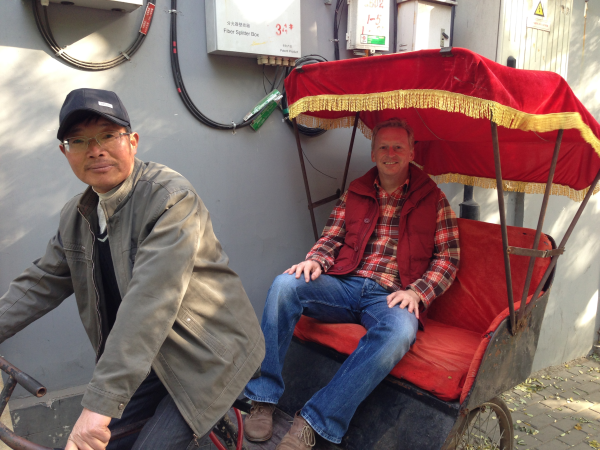What You Should Expect by Visiting China in 2014

China has long evoked interest from the West. From Marco Polo’s times onwards it has been seen as a distant, mysterious land: a vast country that is both the home of a great, ancient civilisation and enduring enigmas.
If you visit any palace in Europe the chances are you will find a “Chinese themed” room, with original wall hangings from the East or Chinese porcelain. To have a large China collection in the 18th century was the equivalent today of a stable full of racehorses or a garage full of Ferraris or Rolls Royces: it was a status symbol for the ultra wealthy, precisely because it was so rare and had to be transported so far over land. Even today in Britain, it’s said to be a sign of class whether you put the milk in your teacup first, or after the hot water is poured in. Chinese porcelain did not crack under the heat: ordinary earthenware did. Therefore only the rich could afford to show off by adding the milk afterwards.
China shut its doors to the West for a long time during the 20th century. As a 6 year old in Hong Kong (I’m the blond one in the middle below!), I remember my mother gesturing over to the fortified border strip with the mainland and telling me that in the distance that was “Red China.” It seemed so exotic, so closed, and so distant. This was 1977 and Chairman Mao had just died. It was really quite unlikely back then that this country would ever be the focus of so much interest again today.
Yet it is. China has now overtaken the industrial powerhouses of Japan and Germany and is the world’s second largest economy. Estimates vary of when it will happen, but every prediction is that it will overtake the United States soon enough. China has come from nowhere and is the subject of so much media interest and commentary both in the US and in Europe. Whereas the 20th century was the “US century” it very much looks like the 21st will be China’s.
I recently spent 10 days in Beijing and will be back out in China in April again. I’m both fascinated and enchanted by the place. There are so many contradictions and contrasts. It’s nominally a Communist country, with power jealously guarded by the Party Elite. At the same time, capitalism is rampant and economic growth is one of the absolute priorities of the government. Basic tenets of socialism such as free healthcare have long been abandoned, and there are 122 US dollar billionaires in the country now (second only to America). In a city such as Beijing or Shanghai, the image of men wearing badly fitting identical dull blue or grey clothes, riding on millions of bicycles, has been replaced by Bentley showrooms and sparkling shopping malls with Apple Stores. Yet in Western China, away from the cities, the appearance is apparently more like parts of Africa. It’s almost as if there are two Chinas: the cities and the country. Movement between the two is tightly controlled by internal passport checks and resident permits.
The recent economic achievements of China are indeed extraordinary. In 1981, some 85% of the vast Chinese population lived in absolute poverty. This doesn’t mean the inability to buy consumer goods: it means the ability to provide a sustenance level of 1000 calories per day to avoid starvation. By 2008 this had fallen to just 13%. Well over 600 million people have been brought out of absolute poverty during this time as a direct result of the Chinese government’s economic development policies. As the World Bank put it, “China accounts for nearly all the world’s reduction in poverty” since the 1980s.
This is something many people in the West don’t particularly focus on. China has been through 150 years of industrialisation in 30 years. It lags behind hugely in terms of human rights and liberal, Western freedoms. Yet however easy (and appropriate) it is to draw attention to this, it is also important to realise that not starving to death is one of the most basic human rights issues. China was torn apart by famine, invasion and chronic instability throughout the 19th century and into the 20th. The Communist government’s Great Leap Forward (1958) led to up to 43 million deaths. As many as 70 million may have died in total under Chairman Mao’s leadership, placing him ahead of both Hitler and Stalin combined, and securing his place as the foremost practitioner of democide in world history. Cannibalism caused by starvation is genuinely still a living memory in parts of China. The traditional Chinese greeting is “did you eat yet?” which shows the place that hunger still has in the national consciousness. From our comfortable Western perspectives, this is incredibly hard to relate to.
All of this explains the enigma of why the Chinese system is so consistently popular amongst the Chinese. If 1.3 billion people really wanted to organise themselves and rise up, no present sized army could keep them in check. There are in fact repeated small-scale riots aimed at local party government officials (which are often not reported)—but every proper poll carried out by Western agencies shows that there is great trust and support for the Communist central government. It is actually equally, or more popular, amongst the population than governments in Western democracies, with support ratings in excess of 80%. The peculiar mixture of state control and free-for-all libertarian style capitalism seems to work for most Chinese. As long as the government continues to deliver on prosperity, stability and development it looks set to continue. Will basic freedoms catch up with the rapid economic expansion? Who knows, but nothing about China would surprise me.
What is it like to visit China today? My experiences have been that it’s enormously pleasant. Somewhere like Beijing or Shanghai is incredibly clean, safe, developed and feel on a par with plenty of West European cities I could think of. For what is seen as a very oppressive state, immigration officials and police are friendly and relaxed, and people seem remarkably happy out on the street. Students I met were very happy to talk and criticise and apparently do so on Internet forums regularly. It really does confuse, knowing what can happen to those who fall seriously foul of the system.
The country has some absolutely iconic sights and is vast; it’s as impossible to visit it “all” in 2 weeks as it is to attempt to see the whole of North America in the same time. You have to choose your area of focus and concentrate on there. It’s not all urban and shiny in the cities: there are plenty of historic areas, temples and green space. You can even grab a ride on a rikshaw as I prove below!
The real story, however, of where China is heading is not the four big already developed, wealthy cities that I’ve already visited of Beijing, Shanghai, Guangzhou or Hong Kong. The Chinese middle class (i.e. those on incomes equivalent to the US or Europe) currently number around 120 million. That’s roughly the size of the populations of France and the UK combined. By 2020 it’s estimated that the number will be 400 million of the 1.3 billion population. They will be living mainly in the some 800 modern, provincial cities we have never even heard of, that in 6 years’ time will have average GDP per capita incomes that exceed Shanghai’s level in 2010. As this happens the potential for business in China, the number of Chinese travelling abroad, and its place in the world will change again, enormously.
It’s an exciting story and a rapidly developing one. China is still finding itself in terms of flexing its newfound muscle in terms of foreign policy, trying to deal with the terrible environmental costs of such rapid expansion, and holding together this massive, disparate population. If China was interesting in Marco Polo’s time, it is certainly just as fascinating today.














